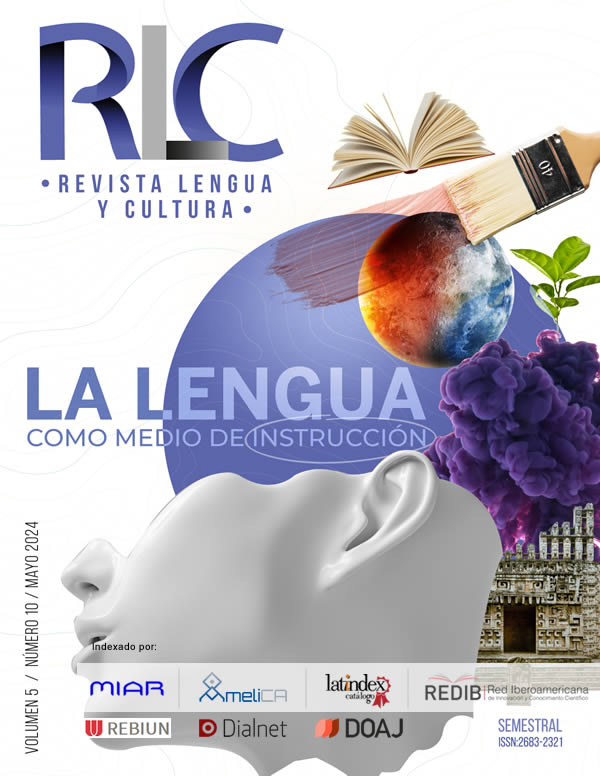Connecting learning from Telegram and through ChatGPT
Abstract
Social networks, as we know them today, have come to stay and have become a new phenomenon that crosses the barriers of space and time, allowing the user to be the protagonist of the network, the new content and information manager. Learning has become a social fact based on the interactions of its participants, in a process that transforms experience into knowledge because, now, the learner builds on the network. We have gone from being consumers of information to prosumers of that information, we have assimilated technology and applied it to different learning environments. This proposal of ubiquitous learning, for the teaching of Spanish as a foreign language, with students of level A1.1, which part of a research project ID-UDIMA-2021-06, is based on experiential learning and is resolved in a social environment to connect formal and informal learning making use of artificial intelligence, since this proposes tools and resources that well used they can be an opportunity for learners. The objectives, therefore, want to address the educational possibilities of learning environments, in the foreign language classroom, and analyze the ChatGPT tool, from its functionality for learning in a social network. Finally, the results obtained through student satisfaction and participation will be evaluated. From Telegram and through ChatGPT we will review all this and see how the virtual student builds on the network.
Downloads
References
Bartolome, A. (2004). Blended Learning. Conceptos básicos. Revista de medios y Educación, 23, 7-20.
Boström, A.K. (2002). Informal learning in a formal context: Problematizing the concept of social capital in a contemporary Swedish context. International Journal of Lifelong Education, 21(6), 510-524. https://doi.org/- 10.1080/0260137022000016730
Bravo, J., Centellas, A. y Aguayo, R. (2018). Nuevos entornos abiertos de aprendizaje para la enseñanza de lenguas extranjeras. ¿Son capaces los MOOC de generar cambio metodológico? Tecnología, Ciencia y Educación, CEF, 9, 113-145.
Burbules, N. C. (2014). El aprendizaje ubicuo: nuevos contextos, nuevos procesos.Entramados: educación y sociedad,1(1), 131-134.
Cabero, J. (2012). Las redes sociales en el entramado educativo. En E. Navas (Coord.), Web 2.0. Innovación, e investigación educativa, (pp.1129). Universidad Metropolitana.
Cabero, J. (2014). Investigación aplicada a la tecnología educativa. Ediciones CEF.
Cabero, J. y Llorente, C. (2012). El profesorado universitario y los ple (Entornos personales de aprendizaje): Diseño de materiales para la formación. En Y. Sandoval (Eds.), Las tecnologías de la información y la comunicación en contextos educativo: Nuevos escenarios de aprendizaje, (pp. 203-223). Universidad Santiago de Cali.
Centellas Rodrigo, A., Cazorla Vivas, C. y Bazo Martínez, P. (2023). Telegram como escenario de aprendizaje disruptivo para la enseñanza del español como lengua extranjera: propuesta de aprendizaje invisible que conecta lo académico con lo cotidiano (dissertation). Universidad Complutense de Madrid.
Comas-Quinn, A.; De los Arcos, B. y Mardomingo, R. (2012). Virtual Learning Environments (VLEs) for distance language learning: shifting or roles in a contested space fo interaction. Computer Assisted Language Learning, 25(2), 129-143. https://doi.org/10.1080/09588221.2011.636055
Cobo, C. y Movarec, J.W. (2011). Aprendizaje invisible. Prácticas y culturas digitales.
Downes, S (2007b. Learning Networks in Practice. Emerging Technologies for Learning, 2(4), 20.
Fainholc, B. (2013). Las redes virtuales y sus desafíos a la educación, en C. Fonseca (Coord.) Los entornos personales de aprendizaje. Visiones y retos para la formación, (pp. 241-265). Universidad Metropolitana.
García, M. (2010). Los valores sociales dentro de las redes virtuales de aprendizaje. Comunicación y pedagogía: Nuevas tecnologías y recursos didácticos, 242, 24-28.
Grandío, A. y Peris, R. (2016). Mobile_Evai y Edutainment: cambiando la virtualidad por la conectividad. En A. M. Arnal (Ed.). Avances en tecnologías, innovación y diseño de la educación superior (pp 43-57). Universitat Jaume I.
Illich, I (1970), La sociedad desescolarizada. Ediciones Godot.
Kampylis, P.; Punie, Y. y Devine, J. 2015. Promoting Effective Digital-Age Learning - A European Framework for Digitally-Competent Educational Organisations. DOI:10.2791/54070
O’Reily, T (2005). What Is Web 2.0: Design Patterns And Business Models For The Next Generation Of Software. University Library of Munich.
Wong, Lung-Hsiang; Poh Aw, Guat, y Sing Chai, Ching (2017). Aprendizaje de idiomas «sin costuras»: Aprendizaje de segundas lenguas y redes sociales. Comunicar, 25(50),9-20.
Copyright (c) 2024 Aurora Centellas

This work is licensed under a Creative Commons Attribution-NonCommercial-NoDerivatives 4.0 International License.













